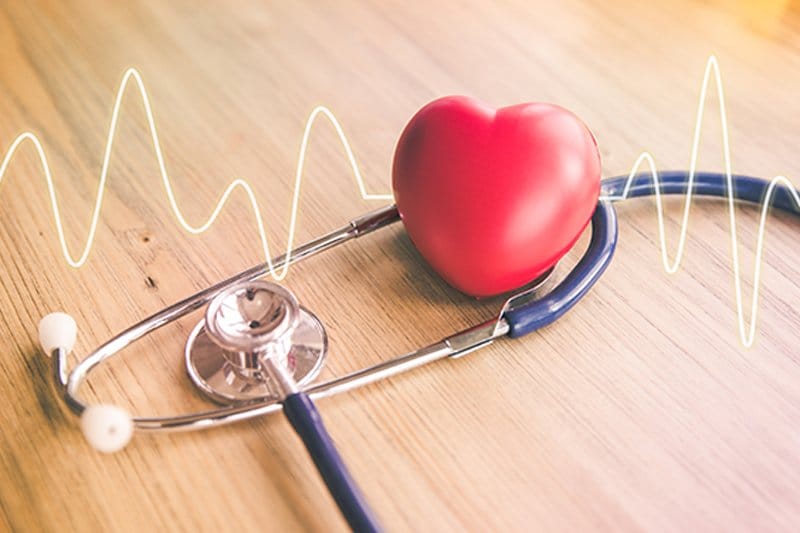 Heart Health: Stress Tests, AEDs and Support Groups
Heart Health: Stress Tests, AEDs and Support Groups
In this series:
Diagnosing Heart Disease
Through diagnosis and treatment, Cone Health physicians aim to minimize the risk of a major heart event, such as a heart attack. Depending on the symptoms you experience, your primary care physician may refer to a cardiologist for a few different tests. A stress test, one of the most recognizable diagnostic measures, is often used to detect Coronary Heart Disease (CHD). Your doctor is most likely to recommend stress testing if you’ve experienced chest pains, shortness of breath, or other symptoms of limited blood flow to your heart. During stress testing, your physician will either give you medication that makes your heart work harder or ask you to exercise (walk or run on a treadmill or pedal a stationary bike) to make your heart rate increase. As you walk, your provider will monitor your heart for any signs of a problem and create a treatment plan based on the results.
If you’re experiencing an abnormal heart rhythm or are complaining of heart palpitations, dizziness or lightheadedness, Cone Health cardiologists will first monitor your heart for a period of time. Depending on your symptoms, doctors can use a patch applied to the chest with an external monitor to observe your heart for a few days, or they may implant a small device under the skin to monitor your heart for up to three years. The data that the monitor provides will help them understand if your heart rhythm is abnormal and if it beats slow or fast. Depending on your results, they may use another test called an electrophysiology study (EP study), which creates a detailed evaluation of the electrical activity in your heart, to find where the abnormal rhythm begins before they determine the best treatment method.
Other forms of testing may include an echocardiogram or ultrasound to examine the valves of the heart. If you or someone around you is experiencing symptoms of a heart attack and/or collapses, call 911 immediately. Quick access to medical attention can make a difference in treatment options and recovery time when it comes to your heart.
Dr. Will Camnitz is a cardiologist at Cone Health Medical Group HeartCare.
How to use an AED
An automated external defibrillator (AED) is a portable device that delivers an electric shock through the chest to the heart. An AED is most commonly used when someone experiences sudden cardiac arrest or an irregular heartbeat and the shock allows a normal rhythm to resume.
Cardiac arrest can happen anywhere, and it’s important to act quickly to increase a person’s chance of survival. If someone around you collapses and doesn’t respond when you call or shake him or her, have someone call 911 immediately and begin CPR. If an AED is available, use it as soon as you can. If there are other rescuers around, have one continue to administer CPR while another prepares the AED. These automated devices are user-friendly and guide untrained bystanders through the process of using it. To use an AED:
- Make sure the person is in a dry area and that their chest is completely dry.
- Attach the sticky pads to the person’s chest. Most will have a diagram that shows where to place them, but one should be on the right center of the person's chest above the nipple and the other pad slightly below the other nipple and to the left of the ribcage.
- Plug the pads into the machine.
- Turn the machine on and wait for commands.
- Stop CPR and do not touch the person as the machine analyzes the heart rhythm. If no shock is required, continue performing CPR until help arrives.
- If a shock is recommended, a recorded voice will prompt the rescuer to press the shock button on the AED. Make sure no one is touching the victim before administering the shock. This shock momentarily stuns the heart and stops all activity. It gives the heart the chance to resume beating effectively.
- After a shock is administered, resume CPR. The AED will beep to the rhythm of compressions for about two minutes, then it will reanalyze.
- Continue until emergency services arrive to take over.
Rob Emory is an American Heart Association training center coordinator with Cone Health Staff Education
Finding Encouragement in Support Groups
According to the American Heart Association, about 92.1 million American adults are living with some form of cardiovascular disease or the after-effects of stroke. The journey from diagnosis to treatment is different for everyone, but the support of family and loved ones can help patients through it. It’s important for patients to know they aren’t alone in what they’re going through, and by connecting with other patients they can reduce stress and find their empowerment.
For those who have been diagnosed with some form of heart disease or condition, whether they have had treatment or not, Cone Health created the Cardiac Families Support Group. The support group seeks to provide a time for members to talk about their experience with diagnosis and treatment. This group is also a safe place for the caregivers and family members of patients to seek emotional support and advice. Participants will hear other patients' stories and have the opportunity to talk with members of our spiritual care team.
Kim Councilman is the coordinator for the Women’s Heart Health Initiative and CV specialist for Cone Health’s Invasive Cardiovascular Services.
Tonya Moore is the support network coordinator and the South Atlantic district support leader for the Heart Sisters/WomenHeart support group at Cone Health. She was the first patient at Cone Health Heart & Vascular Center to have a Left Ventricular Assist Device (LVAD) implanted to treat her congestive heart failure.